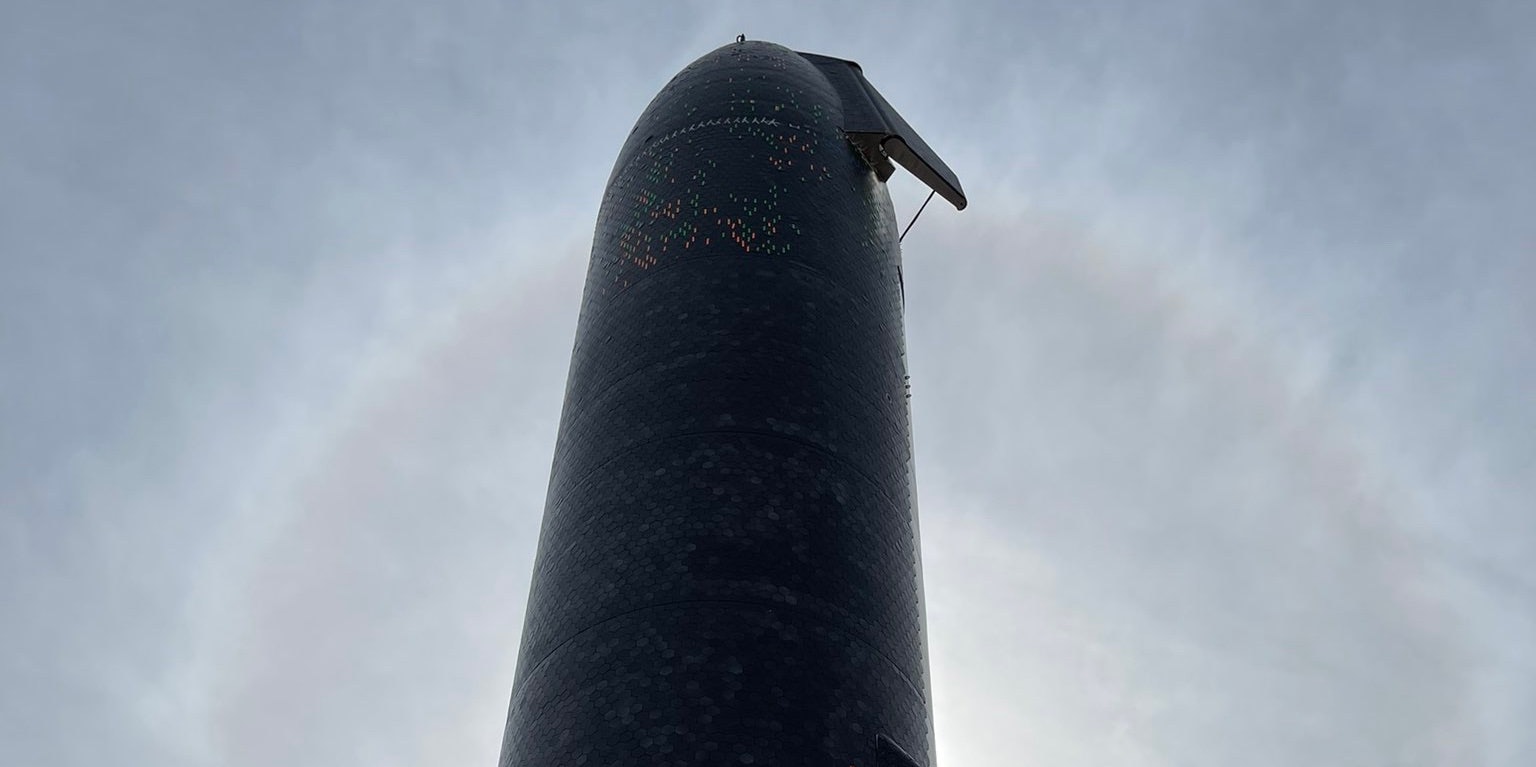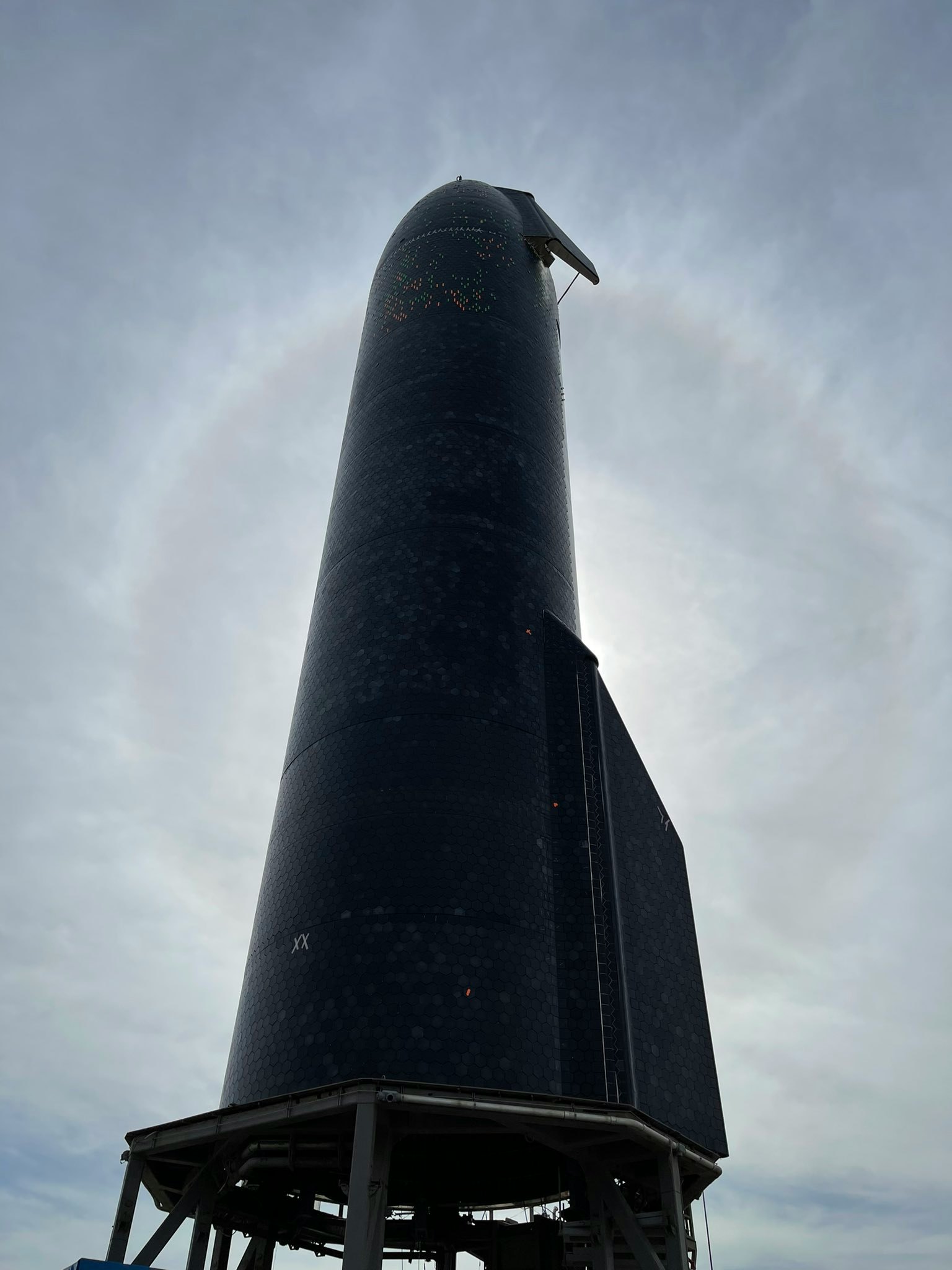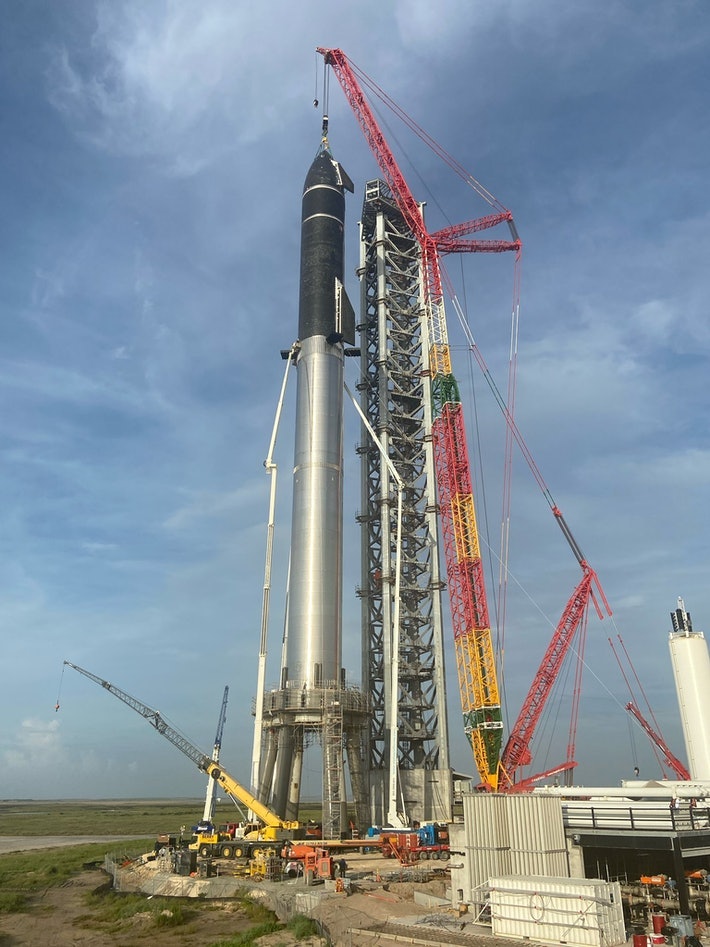
Starship’s next test is set to turn up the heat.
On Monday, Twitter CEO Jack Dorsey shared a photo of the under-development space rocket. It’s perhaps the most ambitious ongoing project for SpaceX, as it plans to use the Starship to send the first humans to Mars and beyond. Dorsey’s photo shows a prototype model ahead of the planned first orbital flight, representing a major milestone in the project’s development.
“Grateful for [SpaceX CEO] Elon Musk and SpaceX,” Dorsey wrote with the image. A reply from Musk suggested that Dorsey and record producer Rick Rubin visited the company’s Starbase facility in Texas.
The ship, first unveiled under the name “BFR” in 2017, is designed to take on SpaceX’s existing crew and cargo launches while enabling more ambitious missions. The fully-reusable rocket uses liquid oxygen and methane as its fuel. SpaceX aims to send humans to Mars in the rocket, refuel using the planet’s resources, and either return home or venture out further.
The orbital flight, expected later this year, is the first step toward this goal. SpaceX aims to send the first humans to Mars by the mid-2020s. The long-term goal is to establish a self-sustaining city on the planet as early as 2050.
Want to find out more about SpaceX’s plans for Starship? Subscribe to MUSK READS+ for exclusive interviews and analysis about spaceflight, electric cars, and more.
SpaceX Starship: why the heat tiles are so vital
The photo shows the rocket’s impressive heat tiles ahead of the launch. These heat tiles are designed to protect the rocket during atmospheric entry. The ship will enter Mars’ atmosphere at speeds of around 16,777 mph. It will slow itself down using a belly-flop maneuver, similar to a skydiver.

They will have to withstand some high temperatures. The air hitting the space shuttle during re-entry reached around 3,000 degrees Fahrenheit as it compressed against the surface. Perseverance, NASA’s Mars latest rover, reached similarly toasty temperatures of around 2,400 degrees when it entered the planet’s atmosphere in February.
Musk previously shared an image of the ship with its heat shield stacked high, on top of the Super Heavy booster that will launch it to orbit.

SpaceX chose stainless steel for the Starship to better protect against those high temperatures. In a January 2019 interview with Popular Mechanics, Musk explained that aluminum and carbon fiber operate in a steady state up to around 300 degrees Fahrenheit. Stainless steel, on the other hand, can reach up to 1,600 degrees. That’s an improvement, but it means the steel will need some help to endure a landing.
These black hexagons, Musk explained previously, are attached to the stainless steel exterior with studs. The tiles are hexagonal to ensure there are no straight paths for hot gases to accelerate.
In March 2019, Musk shared a video of the hex tiles undergoing heat tests. In July, SpaceX added four Starship heat tiles to a Dragon capsule used to transport goods to the International Space Station for NASA.
SpaceX has completed several full-size Starship prototypes during the rocket’s development, unveiling the first in September 2019. But with the planned orbital launch, fans have finally seen how the ship will look with heat tiles.
The first orbital flight, according to FCC documents, will take off from Texas. Over the course of 90 minutes, the ship will fly to orbit and land around 60 miles off the coast of Hawaii.
It will be a small step forward, but one that could send humanity farther than ever.
SPACEX STARSHIP ORBITAL FLIGHT: HOW DID WE GET HERE?
- November 2018 — BFR, first announced in September 2017, gets renamed to Starship.
- December 2018 — Musk confirms the new ship has switched to stainless steel.
- January 2019 — Shortened “Starhopper” prototype unveiled, and Musk explains the switch to steel.
- February 2019 — Raptor engine beats a long-standing rocket record.
- April 2019 — Starhopper completes a tethered “hop.”
- July 2019 — Starhopper launches 20 meters (67 feet).
- August 2019 — Starhopper launches 150 meters (500 feet).
- September 2019 — Starship Mk.1 full-size prototype unveiled.
- May 2020 — Starship SN4 full-size prototype completes a static test fire.
- August 2020 — SN5 launches 150 meters (500 feet).
- October 2020 — SN8 completes the first triple-Raptor static fire.
- December 2020 — SN8 launches 12.5 kilometers (41,000 feet) and crashes into the ground.
- February 2021 — SN9 launches 10 kilometers (33,000 feet) and crashes into the ground.
- March 2021 — SN10 launches 10 kilometers (33,000 feet), lands, and explodes eight minutes later. That same month, SN11 launches 10 kilometers (33,000 feet) and hits the ground in several pieces.
- May 2021 — SN15 launches 10 kilometers (33,000 feet) and lands without a hitch, except for a small fire at the base.
SUBSCRIBE TO MUSK READS+, A PREMIUM NEWSLETTER THAT COVERS THE WORLDS OF ELON MUSK, SPACEX, TESLA, AND EVERYTHING BETWEEN.







